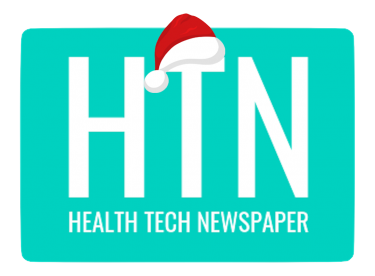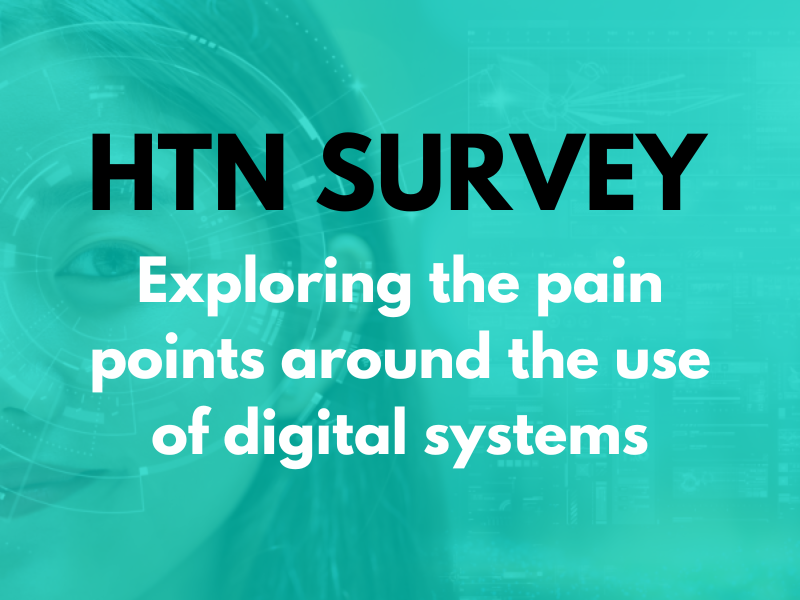Here, we present the finalists in the category of best use of AI for diagnosis, treatment and patient care.
Medtronic
Overview: The AccuRhythm AI platform is an artificial intelligence (AI) system that applies deep learning algorithms to LINQ II insertable cardiac monitor (ICM) data flowing into the CareLink™ network.
Why? False alerts in the ICM space creates workload for clinicians viewing the data and can lead to ambiguity and potential mis diagnosis.
What happened? The algorithms reduce false alerts from the two most common sources of ICM false alerts — Atrial Fibrillation (AF) and Pause.2-4. The AccuRhythm AI AF algorithm enhancement further reduces AF false alerts, preserves sensitivity, (true events) and delivers actionable alerts. Accurhythm AI will look at the episodes that the device, LINQ or LINQ II thinks is an arrhythmic episode and will further decide if the devices assumption is correct or not. If correct, it sends the information onto the clinic, otherwise it is removed from the clinician being able to see it. Accurhyhm AI reduces false diagnostic alerts by 97.4 percent for pause episodes and 88.2 percent in Atrial fibrillation alerts. Evidence has shown this has lead to 200 hours reduction in clinic time for an average clinic annually. AccuRhythm AI algorithms were rigorously trained and developed based on over one million professionally adjudicated ECGs to preserve sensitivity and provide data-driven insights free from bias. 1,5-7 Bypass logic ensures that clinically relevant events still are sent to to clinicians. The power of AccuRhythm AI, is built on 25 years of experience, robustly trained, fine-tuned, and rigorously validated with data from real-world ICM patients.
Looking ahead. Cloud-based enhancements are implemented seamlessly. The update is applied via the cloud to benefit existing and future Reveal LINQ and LINQ II ICM patients.
West London NHS Trust/Healthy io
Overview: The implementation of the Minuteful for Wound AI digital wound management solution enables standardised measurement and documentation of wounds and monitoring over time, allowing West London NHS Trust to have remote clinical oversight and improved data insights driving earlier intervention and better patient outcomes.
Why? At West London NHS Trust, the management of acute and chronic wounds accounts for a significant proportion of the community nursing caseload and cost. Community nurses used manual tape measures for wound measurement, and unregistered nursing staff often needed guidance for complex wounds, leading to delays and inconsistent care.
What happened? Clinicians complete a bespoke wound assessment using their smartphone, and the AI driven algorithms calculate automated wound area and depth measurements, identifying the wound bed tissue types, and also giving percentages of the distribution. MfW offers a ‘live caseload review’ portal to provide central access to wound data. This allows for early diagnosis and treatment, appropriate referral, MDT reviews and virtual senior/specialist review to support clinical decision making. Senior clinicians can use the MfW portal to review patients on the caseload; prioritising the wounds that are in need of the most urgent attention. The senior clinician can remotely optimise the treatment plan and provide advice and guidance for frontline nurses, as well as identifying patients that need specialist intervention, potentially preventing a wound from deteriorating. The impact has included increased quality of care, improved outcomes for patients, improved consistency of reporting, reduction in unwarranted variation in wound care, standardised clinical data collection and reporting, and increased community nursing capacity. Since July 2022, MfW has supported 55,902 assessments and 3,162 patients. Using MfW clinical signs of infection were documented 96.4 percent of the time, representing a 67.9 percent increase from the traditional documentation method pre MfW.
Looking ahead. West London NHS Trust and Healthy io will continue to drive earlier intervention and improved patient outcomes using the MfW digital wound management solution.
AILIS
Overview: AILIS integrated breast health monitoring system combines AI with Deep Neural Networks (DNN), Parametric Dynamic Imaging and telemedicine. The system performs a breast examination in just 4 minutes and provides the examination result after 10 minutes in the app, so the whole procedure takes about 15 minutes.
Why? Breast cancer constitutes about 30 percent of all malignancies among women in European countries. It accounts for 16.6 percent of cancer deaths in this population. It is often detected at a late stage, when its cure is difficult or impossible.
What happened? AILIS was designed by Michal Matuszewski, who, after a family tragedy (caused by cancer), decided to confront breast cancer. For the project, he engaged leading Polish scientists, doctors and programmers. Together they worked on the solution for 8 years, and it is now in the clinical trial phase. The market launch is planned for 2025/2026 (after certification). As a novel device for breast cancer diagnosis, AILIS combines dynamic parametric imaging, artificial intelligence and telemedicine, allowing for a non-contact examination within a few minutes and providing high-quality diagnostic data. A breast exam with results takes only 15 minutes. Thanks to AI, the device examines breasts without contact and without radiation, taking 21,000 measurements in 4 minutes. It sees cancer earlier (than other methods) because it can image the functioning of the tissue under examination, where an abnormality can appear before the tumor structure becomes visible. This is because the system collects information about how the tissue under study functions and allows it to distinguish an area of increased activity from a normal background. To date, nearly 1,500 ladies both healthy and with suspected cancer (BI-RADS 4b, 4c) have already been examined with the AILIS device. The project’s partners include the Marie Sklodowska-Curie National Cancer Institute.
Looking ahead. In the future, it is hoped that the examination can be performed during a coffee break or while shopping, which would eliminate the unnecessary stress of a visit to a medical facility.
Kingston and Richmond NHS Foundation Trust
Overview: In early 2024, Kingston and Richmond NHS Foundation Trust partnered with Skin Analytics to deploy AI as a Medical Device, DERM, into their post-referral service for suspected skin cancer. The innovative dermatology team leveraged DERM to address demand, drive early skin cancer diagnosis for patients and improve service sustainability.
Why? The trust receives around 5,400 urgent suspected skin cancer (USSC) referrals annually. Limited clinical capacity and a national shortage of consultant dermatologists (1 in 4 posts unfilled) meant KRFT faced challenges meeting demand. Compounding this, their skin cancer conversion rates were below the national average.
What happened? In early 2024, KRFT partnered with Skin Analytics to implement DERM into their USSC pathway. DERM assesses, screens and triages lesions that are suspicious for skin cancer; it does this by analysing dermoscopic images of skin lesions and classifying the most common malignant (cancerous), pre-malignant (pre-cancerous) and benign (harmless) skin lesions – in seconds, with comparable accuracy to dermatologists. For KRFT’s dermatology team, this looks like removing patients with benign lesions from dermatology case load, reserving specialist capacity while expediting those with suspected skin cancers to their care: finding cancers, increasing capacity and reducing wait times. Q3 discharge rate overall was 29 percent, with consistent 28-Day FDS of above 91 percent achieved throughout July – Dec 24. The average percentage of patients seen within 7 working days across Q2 & Q3 was 84.3 percent, and Q2 and Q3 also saw a face-to-face avoidance rate of 81 percent. DERM has been implemented safely, meeting key targets including >95 percent target sensitivity for Melanoma and SCC and >90 percent for BCC, Bowen’s and AK. Across all outcomes, the capacity gains seen from the implementation of DERM mean more specialist time to see and treat patients in greatest need – safely speeding up access to critical diagnosis and making the best use of clinician time.
Looking ahead. Skin Analytics is on a mission to build a world where no one dies from skin cancer, and KRFT is playing a crucial part of it.
Sanius Health
Overview: Delays in rare disease diagnosis cause suffering, irreversible damage, and lost lives. Our AI-driven approach uses machine learning and advanced analytics to break this cycle, analysing medical data to refine disease profiles, identify at-risk patients early for diagnosis, and enable timely, personalised care.
Why? For countless individuals with rare diseases, by the time they finally receive a correct diagnosis, if they ever do, it may be too late for effective intervention. Patients in underserved communities face even greater barriers. Without standardised diagnostic pathways, doctors rely on trial and error, leading to missed or incorrect diagnoses.
What happened? Our approach is structured into 3 core workstreams that utilise AI/ML tools, integrating advanced analytics with clinical expertise, to enhance early detection, accelerate diagnosis, and improve patient outcomes. The first phase focuses on collection and integration of key datasets, including federated electronic medical records (EMR), inpatient and outpatient data, to ensure a complete dataset for AI-driven analysis. Additionally, insights from our specialist clinical network help refine key disease markers. These raw medical datasets are then transformed by AI-powered tools into structured, analysable formats. Optical Character Recognition (OCR) technology digitises paper. Deep Learning technology is then applied to organise the data into analysable format for transcribing against the clinical decision support system, with a multi-site clinical engagement team reviewing, validating, and refining the outputs to ensure accuracy and reliability. The final stage involves translating AI-driven insights into implementation in real-world clinical settings. In Primary Biliary Cholangitis (PBC), our AI-powered approach tracked key datapoints and biomarkers over time to evaluate the entire patient cohort for risk stratification. This was also used to assess effectiveness and patient response to specific therapies, identifying 76 percent of patients with an inadequate response to a specific therapy to ensure timely and personalised treatment plan adjustment.
Looking ahead. As we validate our methodology across these conditions, we plan to expand to other rare diseases, for example Pompe disease, refining and scaling our AI models to detect patterns across diverse patient populations.






